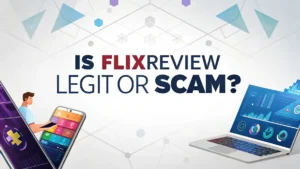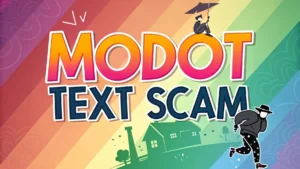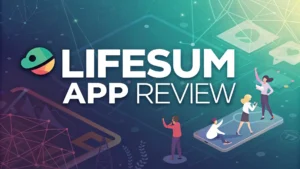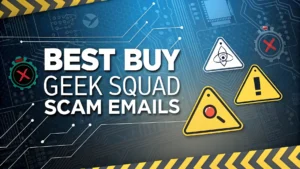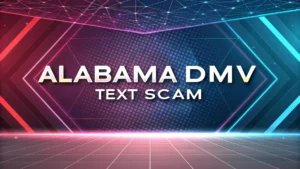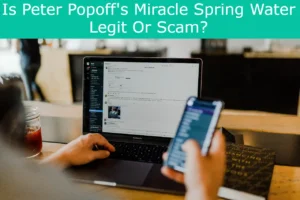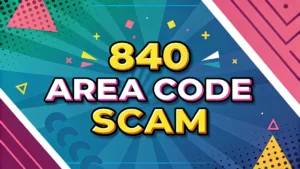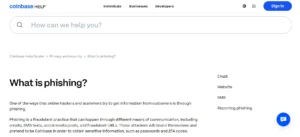Seattle drivers are facing a serious threat that arrives directly in their text messages. Fake DMV scam texts claiming to be from nonexistent Washington state agencies have exploded across the region, targeting thousands of unsuspecting residents with bogus traffic ticket warnings and threats of license suspension.
The scammers craft convincing messages that reference official-sounding codes, threaten severe consequences, and create artificial urgency to trick recipients into clicking malicious links and surrendering personal information or money.
This comprehensive guide reveals everything Seattle residents need to know about protecting themselves from DMV text scams.
Key Takeaways
- Washington State has no Department of Motor Vehicles – The legitimate agency is called the Department of Licensing (DOL), and they never send unsolicited text messages about tickets or violations
- Scam messages reference fake code “15C-16.003” – This municipal or state code does not exist anywhere in Washington’s legal system, making it an immediate red flag for fraudulent communications
- International phone numbers are major warning signs – Most scam texts originate from numbers with +63 area codes (Philippines) rather than legitimate US government phone systems
- Real government agencies never demand immediate payment via text – Authentic traffic tickets and violations are handled through official mail correspondence and court systems, not emergency text message demands
- Report scam texts to SPAM (7726) and delete immediately – Forward suspicious messages to this number to help wireless carriers identify and block similar scams, then delete without clicking any links
What Are Seattle DMV Text Scams and Why Are They Targeting You
Seattle DMV text scams represent a coordinated phishing campaign where cybercriminals send fake text messages claiming to be from Washington state motor vehicle agencies. These fraudulent communications target random phone numbers across the Seattle metropolitan area and beyond.
The scammers create messages that appear to come from official government sources like the “Seattle Department of Motor Vehicles” or “Washington State DMV.” However, these agencies do not exist. Washington state’s actual motor vehicle authority is the Department of Licensing (DOL), which handles all driver licensing and vehicle registration matters.
International criminal organizations typically operate these scams from overseas locations, particularly the Philippines, as evidenced by the +63 international area codes appearing on many scam text messages. They cast wide nets by sending thousands of messages to random phone numbers, hoping to catch vulnerable recipients.
The financial motivation behind these scams is significant. Successful phishing attempts can yield criminals access to bank accounts, credit card information, Social Security numbers, and other valuable personal data that can be sold on dark web marketplaces or used for identity theft.
Psychological manipulation plays a crucial role in these scams’ effectiveness. The messages create artificial urgency by threatening license suspension, legal action, and financial penalties. This pressure tactics exploit people’s natural desire to resolve potential legal issues quickly, often causing them to act before thinking critically about the message’s authenticity.
How These Sophisticated Scams Actually Work Behind the Scenes
Understanding the technical mechanics of these scams reveals why they can appear convincing to unsuspecting recipients. Scammers begin by purchasing large databases of phone numbers from data brokers or harvesting them from various online sources.
The message creation process involves crafting official-sounding text that mimics legitimate government communications. Scammers research real government websites and copy formatting, language patterns, and official terminology to make their messages appear authentic.
Fake website creation represents another sophisticated element of these operations. Criminals create fraudulent websites that closely resemble legitimate government portals, complete with official-looking seals, forms, and payment processing systems. These sites are designed to capture personal information and payment details.
The link redirection system often involves multiple layers of forwarding to hide the true destination website. When victims click the initial link, they may pass through several intermediate pages before reaching the final fraudulent site, making it difficult for authorities to track and shut down the operation.
Data harvesting techniques employed by these scammers extend beyond simple payment information. They often collect email addresses, phone numbers, home addresses, driver’s license numbers, and other personal details that can be used for additional fraud attempts or sold to other criminal organizations.
Payment processing typically occurs through untraceable methods such as cryptocurrency, prepaid gift cards, or money transfer services that make it nearly impossible for victims to recover their funds once the transaction is completed.
Real Examples of Fake DMV Messages Circulating in Seattle
Recent documented scam messages received by Seattle residents follow consistent patterns that help identify fraudulent communications. One common example reads: “WA State Vehicle Registration: Records show you have an outstanding traffic ticket under city code 15C-16.003. You must resolve this within 24 hours or face license suspension.”
Another variation targets specific consequences: “FINAL NOTICE: Your vehicle registration will be suspended starting June 26. Your driving privileges will be suspended for 30 days. A 35% service fee will be charged at toll stations. Click here to resolve immediately.”
Some messages attempt to create false legitimacy by referencing real-sounding but nonexistent agencies: “From: Seattle Vehicle Administration (DMV) – Your vehicle has been reported to our violation database. Immediate action required to prevent legal proceedings.”
Threatening language appears consistently across these scams: “Failure to respond will result in prosecution, credit score damage, and additional fees. This is your final opportunity to resolve this matter before court action begins.”
The fake urgency tactics typically include specific deadlines: “You have until midnight tonight to pay this violation or face automatic license suspension and court summons. Act now to avoid additional penalties.”
These examples demonstrate how scammers combine legitimate-sounding elements with high-pressure tactics to manipulate recipients into hasty decisions without proper verification of the message’s authenticity.
Warning Signs That Immediately Reveal Fake DMV Communications
Sender identification issues provide the clearest indicators of fraudulent messages. Legitimate government communications never originate from international phone numbers, particularly those beginning with +63 (Philippines) or other foreign country codes.
Agency name inconsistencies represent another major red flag. Washington state has no “Department of Motor Vehicles” or “Seattle DMV.” The official agency is the Department of Licensing (DOL), and they never refer to themselves using DMV terminology.
Grammar and spelling errors frequently appear in scam messages despite criminals’ attempts to appear official. Look for awkward phrasing, missing articles, incorrect punctuation, and other linguistic mistakes that would never appear in genuine government communications.
Immediate payment demands constitute a crucial warning sign. Real government agencies handle traffic violations through formal legal processes involving mailed notices, court appearances, and official payment systems – never emergency text message demands for instant payment.
Suspicious link structures often reveal fraudulent intent. Legitimate government websites always use the format [agency].wa.gov for Washington state communications. Any variation, such as wa-gov.net or dol-washington.com, indicates a scam attempt.
Threatening language and artificial urgency represent classic manipulation tactics. Phrases like “final notice,” “immediate action required,” “avoid prosecution,” and “act now” are designed to prevent careful consideration and verification of the message’s legitimacy.
Step-by-Step Guide to Handling Suspicious DMV Text Messages
Immediate response protocol begins with resisting the urge to click any links or respond to the message. Instead, take a screenshot of the message for potential reporting purposes while being careful not to accidentally activate any links.
Verification procedures should involve contacting the Washington State Department of Licensing directly through their official website at dol.wa.gov or by calling their customer service line at 360-902-3900. Never use contact information provided in suspicious messages.
Message reporting process includes forwarding the scam text to SPAM (7726), which helps wireless carriers identify and block similar fraudulent messages. You can also report the incident to the Federal Trade Commission through their online complaint system.
Device security measures require checking your phone for any malware that might have been installed if you accidentally clicked suspicious links. Consider running antivirus scans and monitoring your accounts for unusual activity in the following days and weeks.
Documentation practices involve keeping records of scam attempts, including screenshots, sender information, and any actions you took in response. This information can be valuable for law enforcement investigations and may help protect others in your community.
Communication with others should include warning family members, friends, and colleagues about these scam tactics. Sharing information about current fraud attempts helps create community awareness and protection against future attacks.
What Seattle DMV Scammers Are Really After When They Target You
Financial theft represents the primary objective for most DMV text scammers. They seek immediate payment for fake violations, typically requesting amounts between $50 and $300 that seem reasonable enough to avoid suspicion while generating substantial profits across thousands of victims.
Identity information harvesting provides long-term value for criminal organizations. Scammers collect Social Security numbers, driver’s license details, birth dates, and addresses that can be used for identity theft, credit fraud, and other criminal activities extending far beyond the initial scam.
Banking and credit card data enables immediate financial theft and ongoing fraud. Criminals use stolen payment information to make unauthorized purchases, withdraw funds, and open new accounts in victims’ names.
Personal data compilation allows scammers to build comprehensive profiles for future fraud attempts. Information gathered from DMV scams can be combined with data from other sources to create convincing impersonation attempts for more sophisticated crimes.
Account access credentials such as email passwords, security questions, and two-factor authentication codes provide pathways to victims’ entire digital lives. Criminals can gain access to email accounts, social media profiles, and financial institutions using this information.
Network expansion opportunities arise when scammers gain access to victims’ contact lists and social media connections. They can then target friends and family members with personalized scam attempts that appear to come from trusted sources.
Real Financial and Legal Consequences of Falling for These Scams
Direct financial losses can range from hundreds to thousands of dollars depending on the scam’s sophistication and the victim’s response. Many people report losing between $200 and $800 in fake violation payments, with some cases involving much larger amounts.
Identity theft complications can persist for years after the initial scam incident. Victims may discover unauthorized credit accounts, fraudulent tax returns, medical billing errors, and other identity-related problems that require extensive time and resources to resolve.
Credit score damage often results from identity theft and unauthorized account activity. Victims may see their credit ratings plummet due to missed payments on accounts they never opened or knew existed until the damage was already done.
Banking account compromises can lead to overdraft fees, frozen accounts, and difficulties accessing legitimate funds while financial institutions investigate fraudulent activity. Some victims lose access to their primary checking accounts for weeks during investigation periods.
Time and stress costs represent significant hidden consequences of scam victimization. Victims typically spend dozens of hours contacting financial institutions, filing police reports, disputing fraudulent charges, and rebuilding their financial security.
Legal complications may arise if scammers use stolen identities to commit additional crimes or if victims face difficulties proving their innocence in related fraud investigations. These situations can require legal representation and court appearances.
How to Report DMV Text Scams to the Right Authorities
Federal Trade Commission reporting provides the most effective avenue for scam complaints. Visit reportfraud.ftc.gov to file detailed reports that help federal investigators track fraud patterns and build cases against criminal organizations.
FBI Internet Crime Complaint Center accepts reports through ic3.gov for cybercrimes including phishing and identity theft. Include all available information about the scam message, including sender details, message content, and any websites involved.
Washington State Attorney General maintains a consumer protection division that investigates local fraud complaints. Contact their office through the official state website to report scams specifically targeting Washington residents.
Local law enforcement notification helps police departments understand fraud trends in their jurisdictions. While individual officers may not investigate each case, aggregate data helps law enforcement allocate resources and warn community members.
Wireless carrier reporting involves forwarding scam messages to 7726 (SPAM) and contacting your phone company’s fraud department. Carriers can block scammer phone numbers and implement filters to protect other customers from similar attacks.
Community warning systems include posting information on neighborhood social media groups, contacting local news outlets, and informing community organizations about current scam tactics affecting area residents.
Protecting Your Personal Information from Future DMV Scam Attempts
Phone number privacy practices include being selective about where you share your mobile number and using separate numbers for online purchases, service registrations, and other activities that might expose you to data brokers and scammers.
Social media security settings should limit the amount of personal information visible to strangers. Scammers often research potential victims through social media profiles to create more convincing personalized scam attempts.
Email security measures require using strong, unique passwords for all accounts and enabling two-factor authentication wherever possible. Consider using separate email addresses for financial accounts and government communications.
Regular account monitoring involves checking bank statements, credit reports, and government account portals frequently for signs of unauthorized activity. Early detection of fraud attempts can minimize damage and speed recovery efforts.
Skeptical communication habits include questioning unexpected messages from government agencies, verifying information through official channels, and discussing suspicious communications with trusted friends or family members before taking any action.
Technology protection tools such as call blocking apps, antivirus software, and identity monitoring services can provide additional layers of security against scam attempts and help detect compromise early.
What to Do If You Already Responded to a Fake DMV Message
Immediate damage control requires changing passwords on all financial accounts, contacting your bank to report potential fraud, and monitoring account activity closely for signs of unauthorized transactions or access attempts.
Identity protection services can help monitor your personal information across various databases and alert you to potential misuse. Consider enrolling in identity theft protection programs that provide restoration services if problems occur.
Credit monitoring activation through the major credit bureaus allows you to track new account openings and credit inquiries that might indicate identity theft. Consider placing fraud alerts or credit freezes on your accounts for additional protection.
Documentation collection involves gathering all communications related to the scam, including text messages, emails, website screenshots, and records of any payments made. This information will be crucial for investigations and potential recovery efforts.
Professional assistance consultation may include speaking with identity theft specialists, consumer protection attorneys, or financial advisors who can help navigate the recovery process and prevent future victimization.
Ongoing vigilance maintenance requires continued monitoring of accounts and personal information for months or years after the initial incident, as identity thieves often use stolen information gradually to avoid immediate detection.
FAQs About Seattle DMV Text Scams
Does Washington State have a Department of Motor Vehicles?
No. Washington uses the Department of Licensing (DOL) for all motor vehicle and driver licensing services.
Will legitimate government agencies send text messages about tickets?
No. Real violations are handled through official mail and court systems, never text messages.
What should I do if I clicked a suspicious link?
Change all passwords immediately, run antivirus scans, and monitor accounts for unusual activity.
How can I verify if a traffic ticket is real?
Contact the Washington State Department of Licensing at 360-902-3900 or check your License Express account online.
Can I get my money back if I paid a scammer?
Recovery is difficult but possible. Contact your bank, credit card company, and file reports with the FTC and FBI.
Why do these scams use international phone numbers?
Scammers operate from overseas to avoid US law enforcement and make prosecution more difficult.
How do scammers get my phone number?
Numbers are purchased from data brokers, harvested from websites, or obtained through previous data breaches.
Should I reply to tell them it’s a wrong number?
Never reply. Any response confirms your number is active and may result in more scam attempts.






